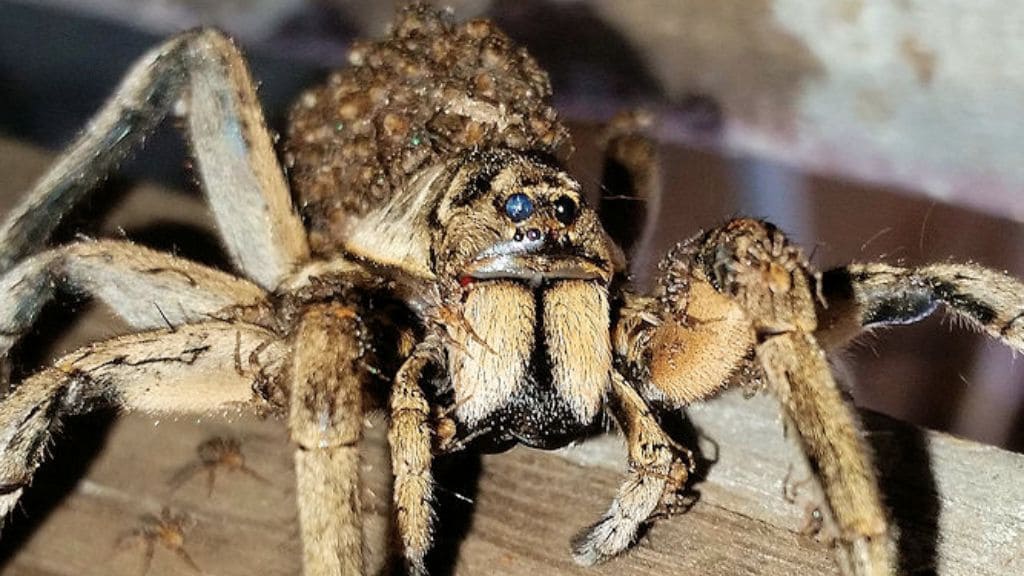In the world of arachnids, wolf spiders stand out for their unique characteristics and behaviors. Found across North America, these spiders are known for their impressive hunting abilities and solitary lifestyles. Unlike many other spiders that spin webs to catch prey, wolf spiders rely on their speed and agility to chase down insects and other small creatures. Their robust appearance and distinct eye arrangement make them easily recognizable to those who encounter them.
One of the most intriguing aspects of wolf spiders is their reproductive strategy. Female wolf spiders carry their eggs in a silken sac attached to their spinnerets, a practice that sets them apart from other spider species. This maternal care extends to carrying the spiderlings on their backs after hatching, ensuring their protection and early survival. This behavior, while fascinating, also presents unique challenges when encountering these spiders indoors.
Understanding why squishing a wolf spider might not be the best approach involves delving into their role in ecosystems and the unintended consequences of such actions. By exploring the implications of squishing these spiders, we can appreciate their ecological importance and consider more humane methods of interaction.
Understanding Wolf Spiders
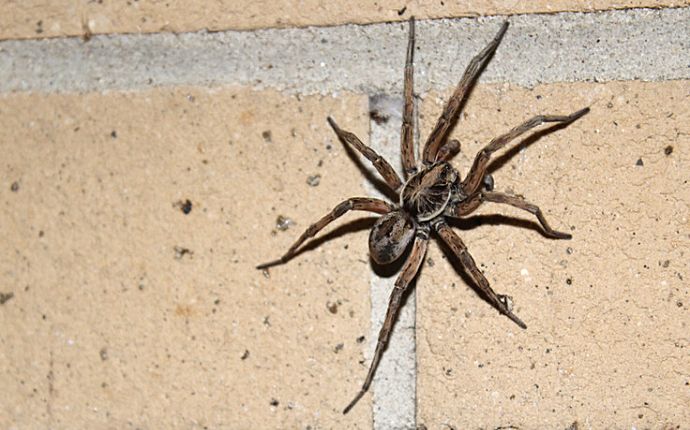
A Common but Misunderstood Arachnid
Wolf spiders belong to the family Lycosidae, which comprises over 200 species in North America alone. They are often mistaken for other types of spiders, but they have distinct characteristics that set them apart. Wolf spiders are solitary hunters, unlike many spiders that rely on webs to catch prey. They have excellent eyesight and are known for their agility and speed, making them effective predators.
Physical Characteristics
Wolf spiders vary in size, ranging from 10 to 35 millimeters in body length. They are typically brown or gray with various markings that provide camouflage in their natural habitats. One of their most distinctive features is their eye arrangement: eight eyes organized in three rows, with the bottom row containing four small eyes, the middle row two large eyes, and the top row two medium-sized eyes. This unique configuration gives them excellent night vision, essential for their nocturnal hunting lifestyle.
Behavior and Hunting
Unlike many spiders, wolf spiders do not spin webs to catch their prey. Instead, they rely on their speed and stealth to ambush insects and other small arthropods. They are primarily nocturnal hunters, venturing out at night to search for food. During the day, they often hide in burrows, under rocks, or within leaf litter to avoid predators and conserve energy.
The Unique Reproductive Behavior of Wolf Spiders
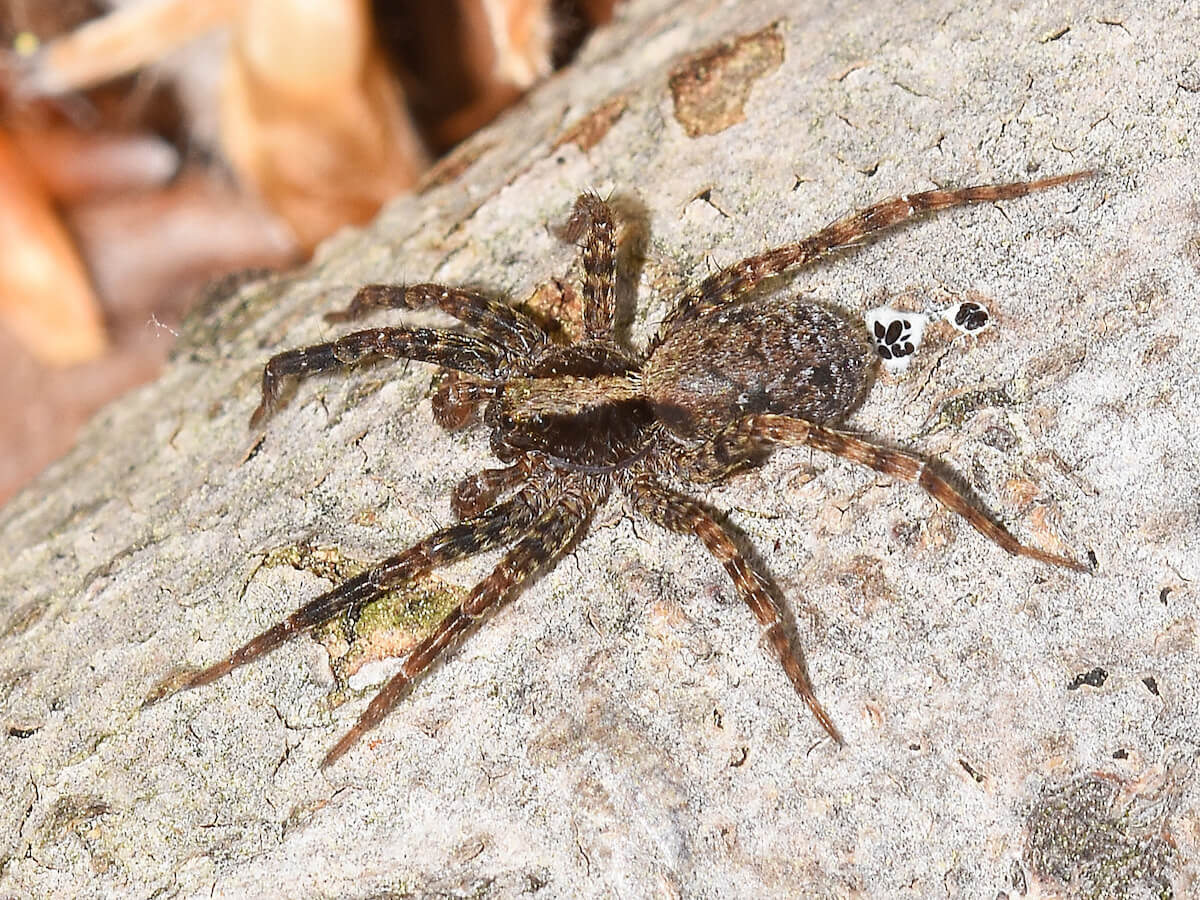
Egg Sac and Spiderlings
One of the most fascinating aspects of wolf spiders is their reproductive behavior. Female wolf spiders carry their eggs in a silken sac attached to their spinnerets. This egg sac is a distinctive feature that sets them apart from many other spider species, which typically leave their egg sacs in webs or hidden in secluded spots.
When the eggs hatch, the spiderlings climb onto the mother’s abdomen, where they remain for several weeks. This behavior provides the young spiders with protection and allows them to benefit from their mother’s hunting prowess. A single female wolf spider can carry hundreds of spiderlings on her back, creating a remarkable sight that is both intriguing and, for some, unsettling.
Maternal Care
The maternal care exhibited by wolf spiders is relatively rare among arachnids. Most spider species do not exhibit such prolonged parental involvement, making the wolf spider’s behavior particularly noteworthy. The mother wolf spider’s dedication to her offspring ensures that a higher percentage of her young survive to maturity, contributing to the overall success of the species.
The Ecological Role of Wolf Spiders
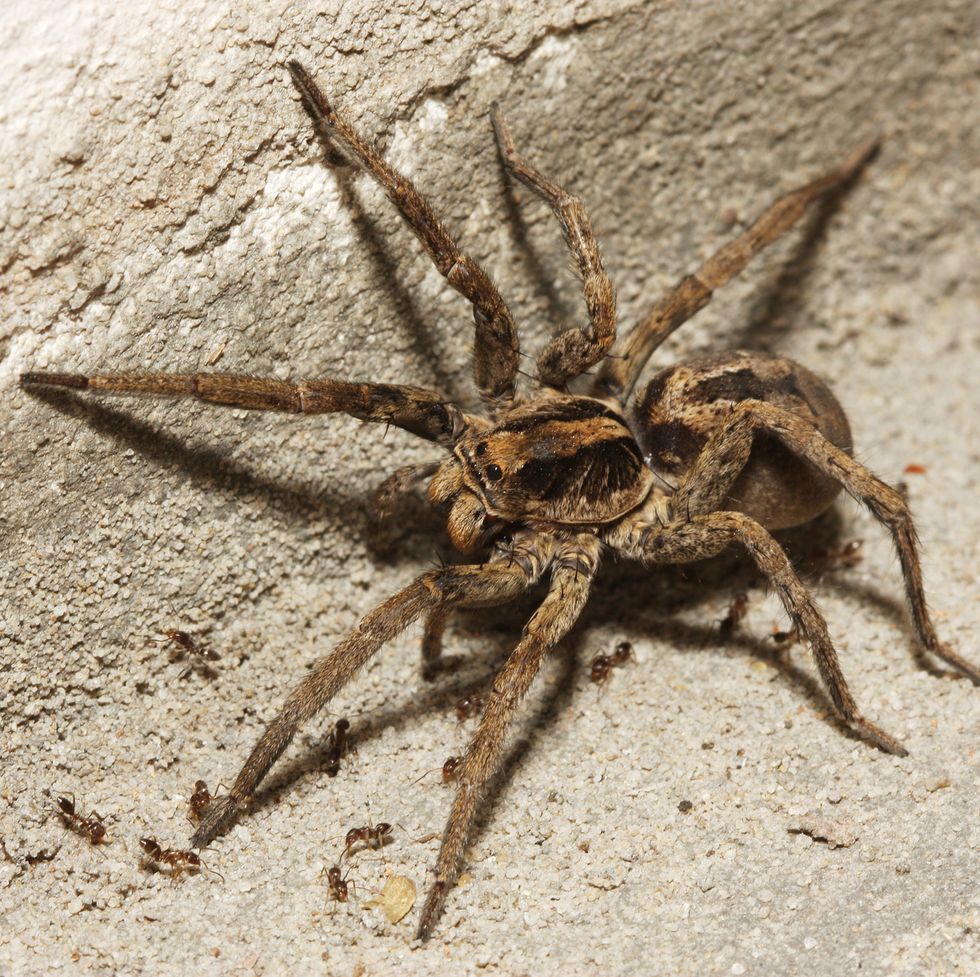
Natural Pest Control
Wolf spiders play a crucial role in maintaining the balance of ecosystems. As voracious predators, they help control populations of insects and other arthropods, many of which are considered pests by humans. By preying on these species, wolf spiders reduce the need for chemical pesticides, which can have harmful effects on the environment.
Indicators of Environmental Health
The presence of wolf spiders in an environment can also serve as an indicator of ecological health. Because they are sensitive to changes in their habitat, such as pollution and habitat destruction, their abundance or decline can provide valuable information about the state of an ecosystem. Monitoring wolf spider populations can help biologists identify areas in need of conservation efforts.
The Risks of Squishing a Wolf Spider
Releasing Spiderlings
One of the most immediate reasons not to squish a wolf spider is the potential release of spiderlings. If you happen to crush a female carrying her young, you might inadvertently release hundreds of tiny spiderlings into your home. This can create a much larger problem than simply dealing with one adult spider. These spiderlings will quickly disperse, seeking out new hiding spots and potentially leading to a more widespread infestation.
The Importance of Identification
Squishing a wolf spider also prevents the opportunity for proper identification. As a biologist, I cannot stress enough the importance of correctly identifying spiders before deciding on a course of action. Wolf spiders are often mistaken for more dangerous species, such as the brown recluse or the black widow. By taking the time to identify the spider, you can ensure that you are responding appropriately and not unnecessarily killing a beneficial species.
Safe and Humane Alternatives

Catch and Release
One of the most effective and humane ways to deal with a wolf spider in your home is to catch and release it outside. This method allows you to remove the spider without harming it or risking the release of spiderlings. To do this, you can use a glass and a piece of paper. Gently place the glass over the spider, then slide the paper underneath to trap it inside. Carefully carry the spider outside and release it into a suitable habitat.
Glue Boards
If you are uncomfortable with catching and releasing spiders, another option is to use glue boards. These sticky traps can be placed in areas where you have seen spiders, and they will capture the spider without squishing it. Once the spider is trapped, you can safely dispose of the glue board or release the spider outside by applying a small amount of vegetable oil to the adhesive to free the spider.
Professional Pest Control
For those dealing with a significant spider infestation, contacting a professional pest control service is the best course of action. Pest control professionals have the knowledge and tools to manage spider populations safely and effectively. They can also provide guidance on preventing future infestations and ensuring that your home remains spider-free.
Preventing Spider Infestations
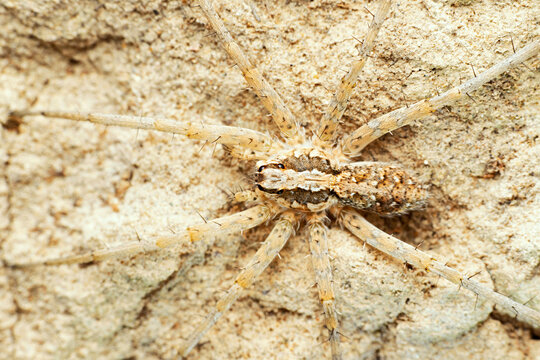
Home Maintenance
Preventing spider infestations begins with proper home maintenance. By making your home less attractive to spiders, you can reduce the likelihood of encountering them indoors. Some effective strategies include:
- Regular Cleaning: Keep your home clean and free of clutter. Vacuum regularly, especially in areas that are seldom disturbed, such as basements, attics, and closets.
- Sealing Entry Points: Inspect your home for potential entry points and seal any gaps or cracks. Pay particular attention to doors, windows, and areas where utilities enter the home.
- Outdoor Maintenance: Keep firewood, building materials, and other debris away from the exterior of your home. Trim shrubs, vines, and tree limbs that are close to the house to reduce hiding spots for spiders.
Lighting
Spiders are attracted to light because it draws in their prey. By changing the type of outdoor lighting you use, you can reduce the number of insects and spiders around your home. Consider replacing standard incandescent bulbs with yellow or sodium vapor light bulbs, which are less attractive to night-flying insects.
Natural Repellents
There are several natural repellents that can help deter spiders from entering your home. Essential oils, such as peppermint, tea tree, and eucalyptus, are known to be effective spider repellents. You can create a spray by mixing a few drops of essential oil with water and applying it around entry points and other areas where spiders are commonly found.
Appreciating the Role of Wolf Spiders

Educational Opportunities
Encounters with wolf spiders can provide valuable educational opportunities, especially for children. Learning about these fascinating creatures can foster a greater appreciation for the diversity of life and the importance of each species in maintaining ecological balance. By observing and studying spiders, we can gain a deeper understanding of their behaviors, adaptations, and roles in the environment.
Overcoming Fear
For many people, the fear of spiders, known as arachnophobia, can be overwhelming. However, understanding the biology and behavior of spiders can help alleviate some of this fear. Recognizing that wolf spiders are generally harmless and beneficial can shift perspectives and reduce anxiety. Taking the time to learn about these creatures can transform fear into curiosity and respect.
Frequently Asked Questions (FAQs) about Wolf Spiders
1. What are wolf spiders?
Answer: Wolf spiders are a common family of spiders (Lycosidae) found in North America. They are known for their unique eye arrangement, excellent eyesight, and their hunting behavior, which does not involve spinning webs to catch prey.
2. Why are they called wolf spiders?
Answer: They are called wolf spiders because of their hunting technique. Much like wolves, they are solitary hunters that chase and pounce on their prey rather than trapping them in webs.
3. How can I identify a wolf spider?
Answer: Wolf spiders can be identified by their size (ranging from 10 to 35 mm), brown or gray coloration, and their distinctive eye arrangement of eight eyes in three rows. They have two large eyes in the middle row, which give them excellent night vision.
4. Are wolf spiders dangerous to humans?
Answer: Wolf spiders are generally not dangerous to humans. Their bites can be painful but are not typically harmful. They are more interested in hunting small insects and arthropods than interacting with humans.
5. What should I do if I find a wolf spider in my home?
Answer: If you find a wolf spider in your home, the best approach is to trap and release it outside. You can use a glass and a piece of paper to catch the spider and safely relocate it. Alternatively, you can use glue boards to trap the spider without squishing it.
Conclusion
As a biologist, I have come to deeply appreciate the complex and fascinating world of spiders, particularly the wolf spider. While the impulse to squish these spiders may be strong, I urge you to consider the broader implications of such actions. Wolf spiders play a crucial role in controlling pest populations and maintaining ecological balance. Their unique reproductive behaviors and maternal care are remarkable examples of the diversity of life on our planet.

